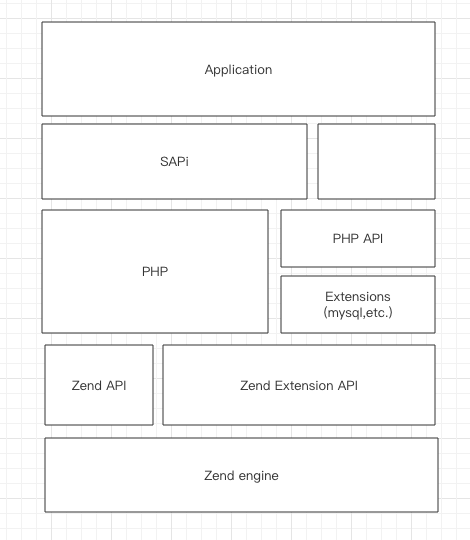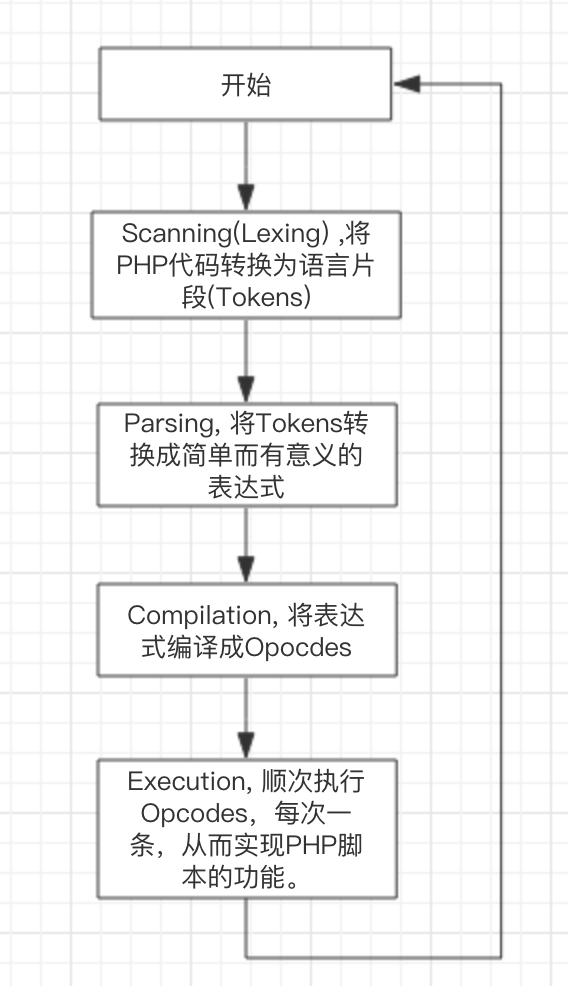
This article introduces to you the operating mechanism and working principle of PHP. It has certain reference value. Friends in need can refer to it.
Multi-process model: Since PHP is a multi-process model, different requests do not interfere with each other. This ensures that the failure of one request will not affect the entire service. PHP has also supported the multi-thread model for a long time.
Weakly typed language: The type of a variable is not determined at the beginning. It is determined during operation and implicit or explicit type conversion may occur.
The engine (Zend) component (ext) mode reduces internal coupling.
The middle layer (sapi) isolates the web server and PHP.
The syntax is simple and flexible, without too many specifications. Disadvantages lead to a mixture of styles.

PHP provides a four-layer system from bottom to top:
1. Zend engine
Zend is implemented in pure C and is the core part of PHP. Its main function is to translate PHP code into executable opcode. Process and implement related processing methods, implement basic data structures (such as hashtable), memory allocation mechanisms and management, and provide related API methods for external calls.
2. Extensions
revolves around the Zend engine and provides various basic services through componentization, such as common PHP built-in functions (array(), etc.), as well as a series of standard libraries. It can also Customize and implement the extended application you want
3, Sapi
Sapi's full name is Server Application Programming Interface, which is the server application programming interface. Sapi enables PHP to interact with peripheral data through a series of hook functions. This is PHP has a very elegant and successful design. Through sapi, it successfully decouples and isolates PHP itself from upper-layer applications. PHP can no longer consider how to be compatible with different applications, and the application itself can also implement different processing methods according to its own characteristics.
4. Upper-layer application
The PHP programs written in daily life can obtain various application modes through different spai methods. How to implement web applications through webserver, run them in script mode on the command line, etc.
Sapi uses some special processing methods to allow external applications to exchange data with PHP. Common cli, fastcgi, etc.
PHP dynamic language execution process:
After getting a piece of code, after lexical analysis, syntax analysis and other stages, the source program will be translated into instructions (opcodes), and then the ZEND virtual machine will execute these instructions in sequence to complete the operation. PHP itself is implemented in C, so the functions that are ultimately called are also C functions. In fact, we can regard PHP as a software developed in C
The figure below shows the four steps that PHP goes through when executing a piece of code.

The four steps are:
1.Scanning(Lexing), convert PHP code into language fragments (Tokens)
2.Parsing, convert Tokens into simple and meaningful expressions
3.Compilation , compile the expression into Opcodes
4.Execution, execute the Opcodes sequentially, one at a time, thereby realizing the function of the PHP script.
To put it simply, the above four steps first perform lexical analysis on the PHP code, and then get the words one by one. Then in the parsing stage, the useless words in the previously obtained words are removed, leaving Meaningful expressions, then compile the meaningful expressions from the previous step into opcodes, and finally execute the opcodes fields in sequence to implement the PHP script.
Note:
Nowadays, some Cache, such as APC, can enable PHP to cache Opcodes. In this way, every time a request comes, there is no need to repeat the first three steps, which can greatly improve the execution speed of PHP.
related suggestion:
Let’s talk about how to use the PHP generator
Analysis of PHP's Laravel scheduled task Schedule
The above is the detailed content of Contents of PHP's operating mechanism and working principles. For more information, please follow other related articles on the PHP Chinese website!




